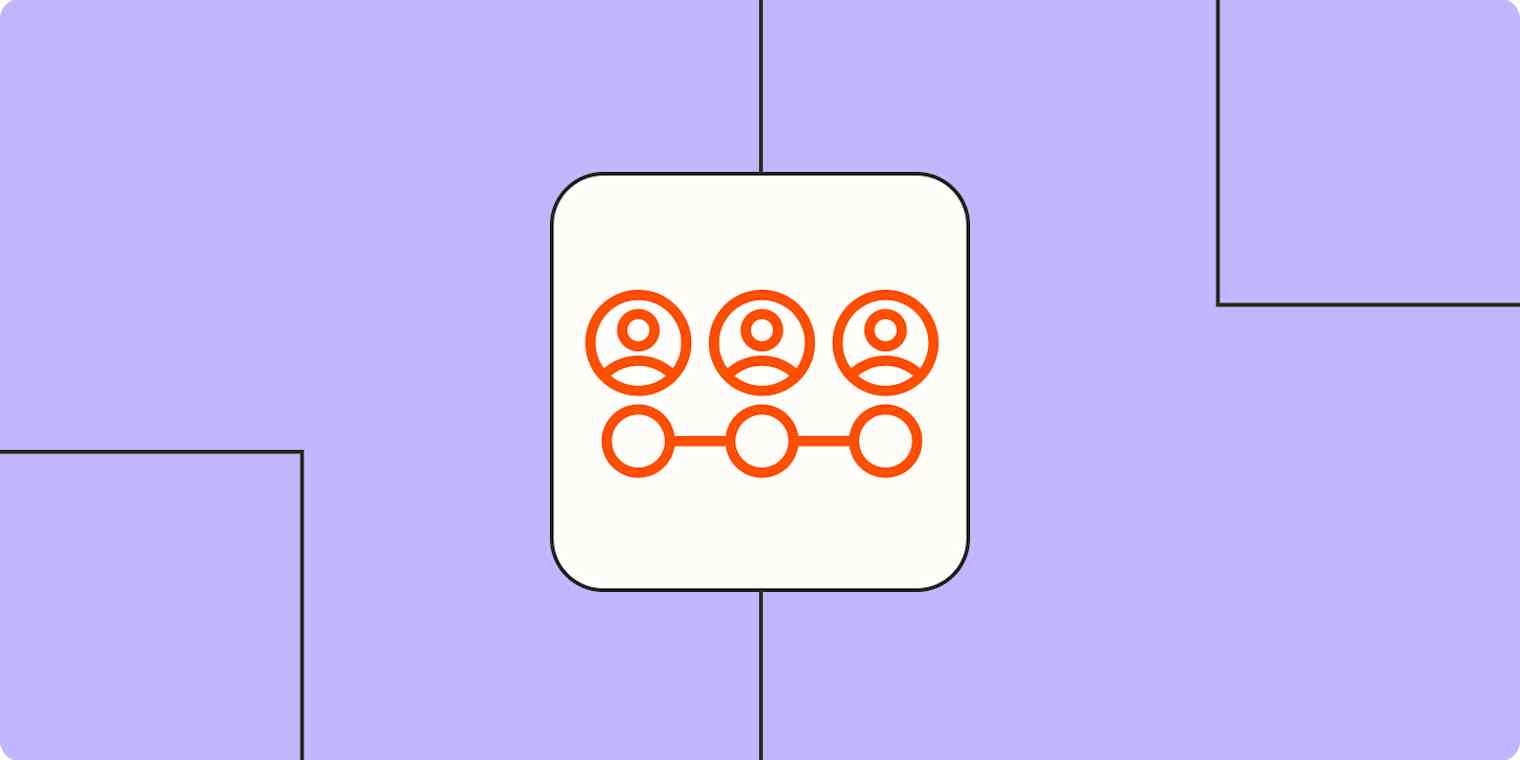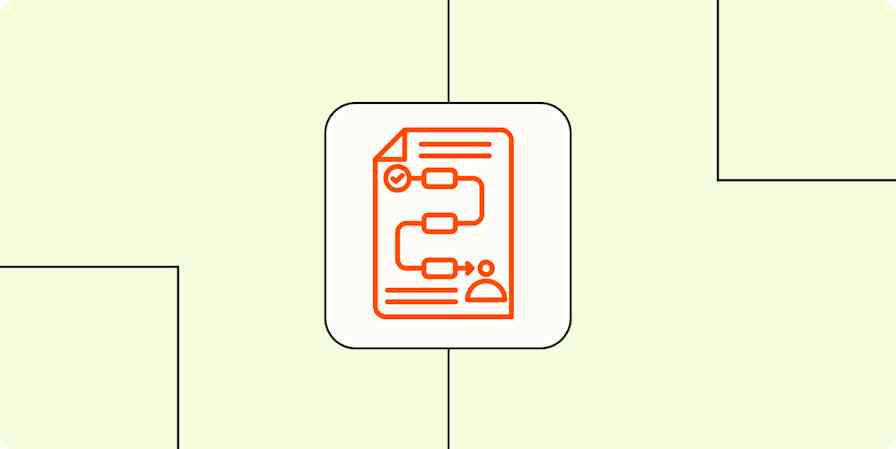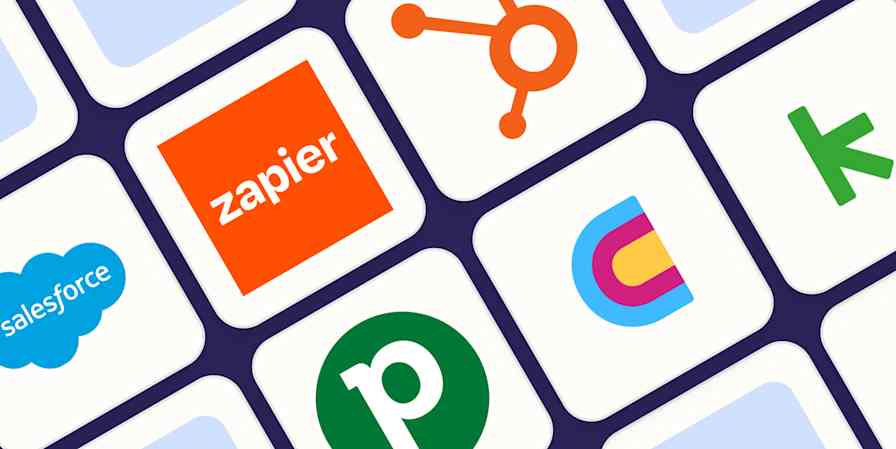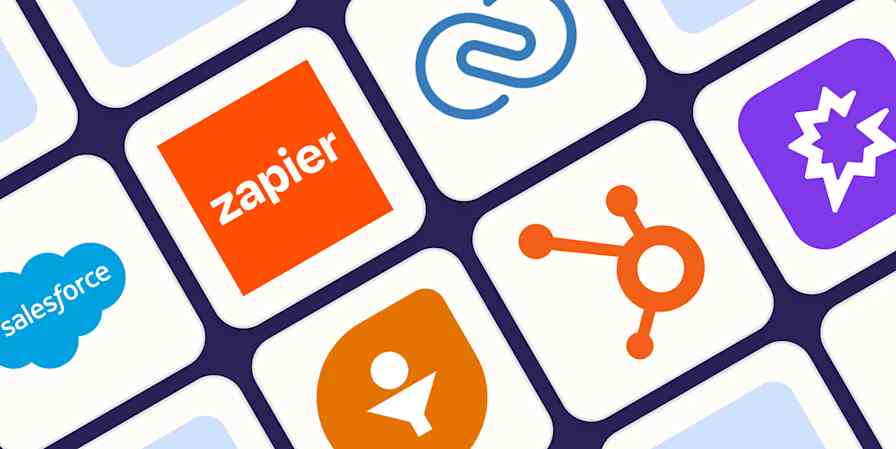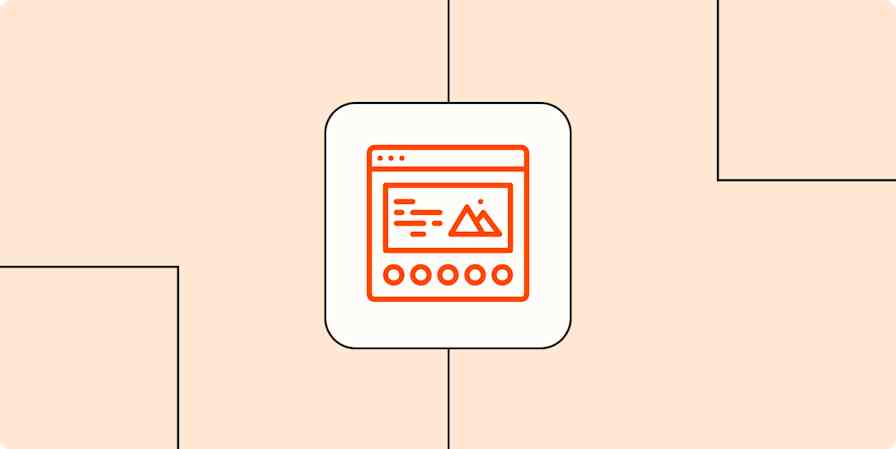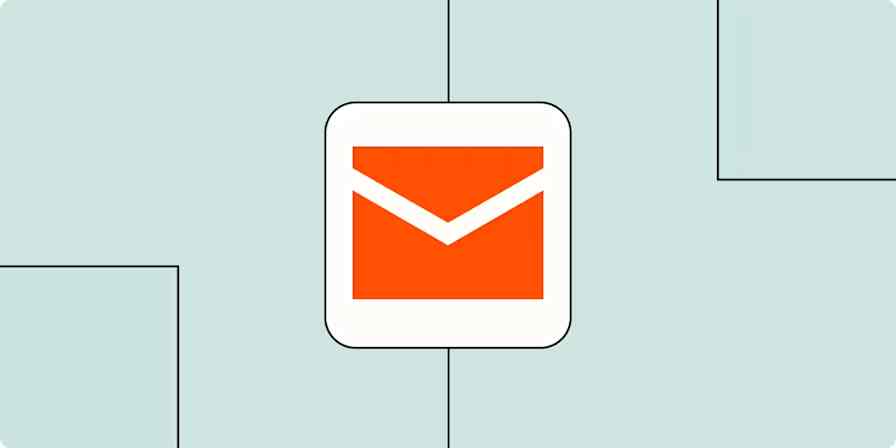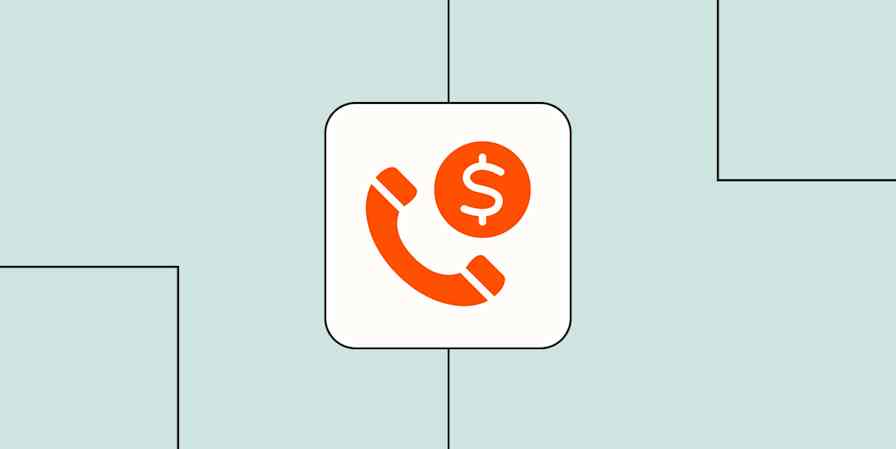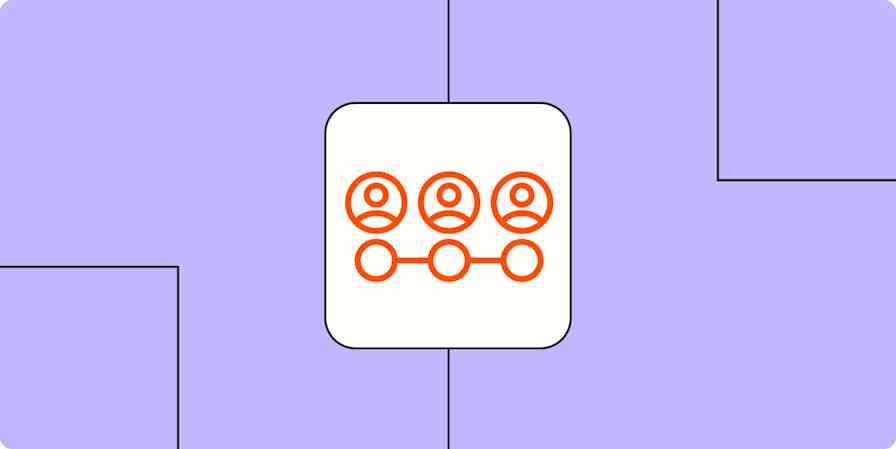If you ever see "burst pipeline" in a headline or—in my experience—an email from your landlord, you know there's a very expensive and time-consuming repair coming (to say nothing of the waste of valuable resources). And it's no different with business pipelines: if you're not careful about maintaining them, they can send a massive amount of time and money down the drain. (Or in my case, into the neighbor's backyard.)
Pipeline management refers to the ways in which companies organize, monitor, analyze, and ultimately optimize their various business processes. Since sales are the lifeblood of any business, I'll be diving more specifically into managing sales pipelines below.
Table of contents:
What is a sales pipeline?
A sales pipeline is the series of stages a business sets up to acquire, nurture, and ultimately convert leads. The way that business organizes this pipeline and incorporates it into their broader sales processes like inventory management, branding, marketing, and customer support is called sales pipeline management.
A sales pipeline is generally overseen by a sales manager in collaboration with Sales and Marketing teams, though other relevant stakeholders can also be involved as their purviews overlap with sales processes.
A well-oiled (or properly patched, in my former landlord's case) sales pipeline has a few important benefits:
It can increase conversion rates.
It can improve overall conversion efficiency.
It can be used to improve collaboration across teams.
It can be monitored and analyzed to identify inefficiencies and friction points.
It can be used to forecast future sales projections.
It can be scaled and replicated.
The stages of a sales pipeline

The stages of a given sales pipeline will look different for each company depending on their specific product, market, business model, scale, and industry. A plumber's sales pipeline, for example, will be much simpler than an international wholesale HVAC equipment supplier's pipeline.
Generally speaking, a sales pipeline of any level of complexity can be broken down into seven phases:
Lead generation: This amorphous phase is where marketing tactics, brand recognition, advertising, and other sales campaigns come together to bring attention to a business or offering.
Lead qualification: Once there are real people paying attention to a business or specific offering, this step weeds out the window shoppers from prospects with actual conversion potential.
Lead interaction: At this point, the business interacts in some way directly with qualified leads. This can be anything from an advertisement to an email follow-up to a cold call.
Value proposition: Before a lead will want to move on through the pipeline, they need to be confident that the offering gives them enough value to warrant their time and attention. Propositions include sales calls, case studies, formal proposals, demonstrations, and other tactics that help prove the value of the offering.
Negotiation: This step might look like a traditional negotiation in which both sides work toward a price, quantity, timeline, and value that makes the transaction worthwhile for them, or it could simply be expectation-setting to ensure all parties are in agreement on all of the above.
Conversion: When the stars have all sufficiently aligned for the buyer and seller, the sale goes through, and the lead is converted from a prospect to a customer.
Customer follow-up: Ideally, the completion of a transaction isn't the end of the customer journey. Sales reps can then follow up on the transaction to make sure the customer's expectations have been met with the goal to keep them returning for more business in the future.
Sales funnel vs. sales pipeline
A sales funnel represents the customer's journey through a business's sales process, whereas a sales pipeline describes the way a business progresses and tracks a prospect through its sales process. These two terms are often used interchangeably, but they're really opposite sides of the same coin.
A sales funnel can be used to help a business visualize conversion rates. The funnel shape represents the way the early phases of a sales process capture larger amounts of less qualified prospects who whittle down in volume but become increasingly qualified as agents help them progress down the pipeline.

13 tips for successful pipeline management
If you're ready to keep your sales processes flowing smoothly, check out these pipeline management tactics.
1. Focus on sales-qualified leads
Sales-qualified leads (or SQLs) are the lifeblood of any sales process. These leads are already at least somewhat educated on a product or service and are interested in moving forward, making them much more valuable than early-funnel leads that haven't shown enough interest to progress toward the purchase phase.
What makes SQLs so valuable is that they have agency—like water dripping through a leaky faucet, they're moving of their own volition. This lack of friction makes them more receptive to communication, less prone to attrition, and more likely to convert. Sales efforts focused on more qualified leads are thus inherently more valuable than those focused on leads with less likelihood of converting.
2. De-prioritize dead leads
On the other side of the SQL coin are dead leads (or cold leads)—leads that never truly became viable prospects after showing an initial hint of interest. It can be tempting to keep trying to move these leads down the pipeline, especially if they've given one or two signs of viability, like clicking an ad, starting a form, adding an item to a cart, or signing up for an email list.
While that doesn't mean you should quit on them entirely (more on that below), it does mean that the more valuable qualified leads should take precedence since they represent a more likely bang for your buck.
3. Always follow up
There are a lot of good reasons a lead could grow cold temporarily, so rather than quit on dead leads entirely, set a definite follow-up plan and stick to it. Following up is a pretty rich art form, but to start, here are a few baseline considerations to plan around:
Space out outreach by anywhere from a few days to a couple weeks.
Plan on at least five outreach iterations.
Try to reach out across multiple communication channels.
Always include a call to action.
Strive to give the recipient some kind of value in each communication.
Monitor, test, and analyze results, then recalibrate and repeat.
And to ensure you're not spending too much time following up with dead leads, consider more hands-off tactics like automating your outreach with AI.
4. Define pipeline metrics
To continue refining your pipeline, you need to have definite sales metrics in place for each of its phases. Start by running through your pipeline from start to finish, identifying individual phases as you go. Note any definable elements involved, including time, cost, quantity, and rates. Here are a few examples to get you started:
Number of deals in the pipeline
Average size of deals
Average percentage of closed deals
Average time it takes to close deals
Cost per lead
Time and cost associated with qualifying leads
Sales velocity
Average revenue per lead
Average number of follow-ups per conversion
5. Analyze pipeline metrics
All the numbers in the world won't do your pipeline any good if you don't put them to use. Are you generating enough leads at the start of the pipeline, or is your conversion rate just too low? Are your qualified leads getting too cold before a follow-up? Where in the process are SQLs meeting the most friction?
Once you've established the data that defines the success of each part of your pipeline, you can start to get a picture of where leads are being lost, where collaboration is bottlenecking, where processes need optimizing, and where revenues aren't aligning with costs.
6. Have a standardized sales process
A clearly defined roadmap for your sales process can make a huge difference in your conversion rates, sales cycle length, and cost efficiency. Your sales agents should never have to question what their next move is when a prospect takes (or doesn't take) any action—the sequence should be built in logically and sequentially—and ideally with automation triggers that help agents progress through predictable tasks and milestones.
Here are some of the benefits process standardization can bring your team:
More efficient workflows
More predictable sales cycles
Quicker onboarding
Increased accountability
Simplified cross-team collaboration
Enhanced performance transparency
Better ability to set automation triggers
Process testing, troubleshooting, and replication
7. Provide prospects with additional value
It's not always enough to provide a quality product or service for an agreed-upon price. No matter how unique or high quality yours is, chances are, there's a competitor your potential customers can bounce over to.
Quality-adds can be hugely helpful in tipping those semi-qualified leads into fully-qualified ones, particularly during follow-up phases. Consider injecting some of these into your outreach to get a bump in conversions:
Include a token first-time discount.
Add another offer to a related product or service.
Provide more information about your product or service.
Offer a free downloadable asset.
Offer a free trial.
Offer a free quote.
Send a competitor comparison.
8. Utilize a CRM
Unlike the pipelines in the walls of your home, most sales pipelines should have many moving parts. If it's hard for you to even conceptualize how you can keep all your teams, agents, deadlines, expenses, revenues, contacts, and campaigns organized, you need a customer relationship management (CRM) solution.
Because a CRM can be such a powerful organizational tool, it's also a powerful sales tool. CRMs keep tasks, records, reporting, and other essential assets consolidated and accessible across teams, leading to more efficient workflows and more effective sales processes.
9. Take advantage of automation
Pipelines thrive on efficiency, and nothing is more efficient than automation. By incorporating automation into your pipelines, you allow agents to seamlessly move customers along from phase to phase without having to think twice about low-level repetitive tasks like following up with cold leads, notifying team members, updating records, or setting deadlines.
Most CRMs have built-in automation, but you can extend that automation to your other apps with Zapier. Here are some examples:
Update lead information automatically.
Keep your team informed about new leads by sending notifications across channels and updating client profiles.
Automate lead conversion to ensure leads get the right messaging at the right time.
Automate client communication by using Zaps to set reminders and send follow-up messages.
Automate client retention by automatically sending surveys and sending notifications to all relevant apps when clients reach out.
Turn each pipeline phase into a dedicated calendar event.
Zapier is the most connected AI orchestration platform—integrating with thousands of apps from partners like Google, Salesforce, and Microsoft. Use interfaces, data tables, and logic to build secure, automated, AI-powered systems for your business-critical workflows across your organization's technology stack. Learn more.
10. Dig deeper into lead sources and customer journeys
When managing sales pipelines, data analysis doesn't stop at the raw sales figures and conversion rates—it's also essential to take a close look at how customers enter your pipeline and where they tend to fall out of it. If you're just looking at your leads and conversion rates in aggregate, you're likely missing the forest for the proverbial trees. Ask some of these questions:
What sources do most (and the fewest) of your qualified leads come from?
What sources do your highest-converting (and lowest-converting) leads come from?
What sources do your fastest-converting (and slowest-converting) leads come from?
At what point in the pipeline do you lose the most (and fewest) leads?
Which types of leads are most (and least) receptive to follow-up tactics?
The answers to these questions should show the strengths and weaknesses of your pipeline—scale up efforts where you're already seeing success, and scale down where you're seeing friction.
11. Don’t complicate the sales process
I don't think I've ever looked at a process of any kind and said, "Wow, this is too simple, I think it needs more steps." While you might need to add layers into your sales pipeline as your business grows, it's always a good idea to keep it svelte.
From the internal standpoint, a pipeline should be as simple as possible to keep it replicable and nimble. This makes agents' lives easier, helps keep them from overlooking important steps in the sales process, and allows them to be more focused on fewer redundant tasks.
From the customer perspective, leads can progress along the funnel with fewer opportunities for attrition if your sales pipeline is simple and efficient. You don't want to give them any reason to change their mind or seek out a competitor, both of which are always risks that come with complexity.
12. Leverage AI
It's no secret that Zapier is all for embracing artificial intelligence. While AI can perform plenty of fun tricks for the casual user, it can totally change the game for businesses. To get your juices flowing, here are a few examples of how AI can be integrated into a sales pipeline:
Data cleanup: Remove duplicate entries, fix structural errors, fill in missing values, and reformat fields or cells for consistency.
Outreach: Use ChatGPT for writing sales emails.
Contact capturing: Transfer user contact information to relevant databases.
Data import and export: Schedule regular data import and export, or have AI handle it as data updates in real time.
Custom automatic messaging: Generate, reformat, or translate messaging for welcome messages, email outreach, or query responses.
Task list updating: Add, update, or complete cards in Kanban boards or other task lists.
Reporting and forecasting: Synthesize data to generate custom reports, identify trends, and create forecasts.
Customer service: Implement chatbots, automate ticketing, generate usage guides, create knowledge bases, and troubleshoot common issues.
Lead scoring: Apply lead scoring frameworks to leads that update profiles in real time.
CRMs like Salesforce are already starting to build AI into their products, but you can always integrate ChatGPT or other AI apps into your existing platforms using Zapier.
13. Audit your pipeline process
If there's a common theme throughout most of these tips, it's adaptability and insight. (I know that's two things, but bear with me.)
What works this year may not work next year, and what works for one product may not work for another. Sales pipelines are as fluid as the market they flow into and the teams that run through them. That's why it's vital to audit your processes regularly.
Quarterly is a great starting point—you need enough time to allow trends to emerge but not so much time that you miss windows to change things that aren't working. Analyze your performance metrics at each phase and align them with broader sales goals or business objectives to ensure your pipeline is still running smoothly and meeting expectations.
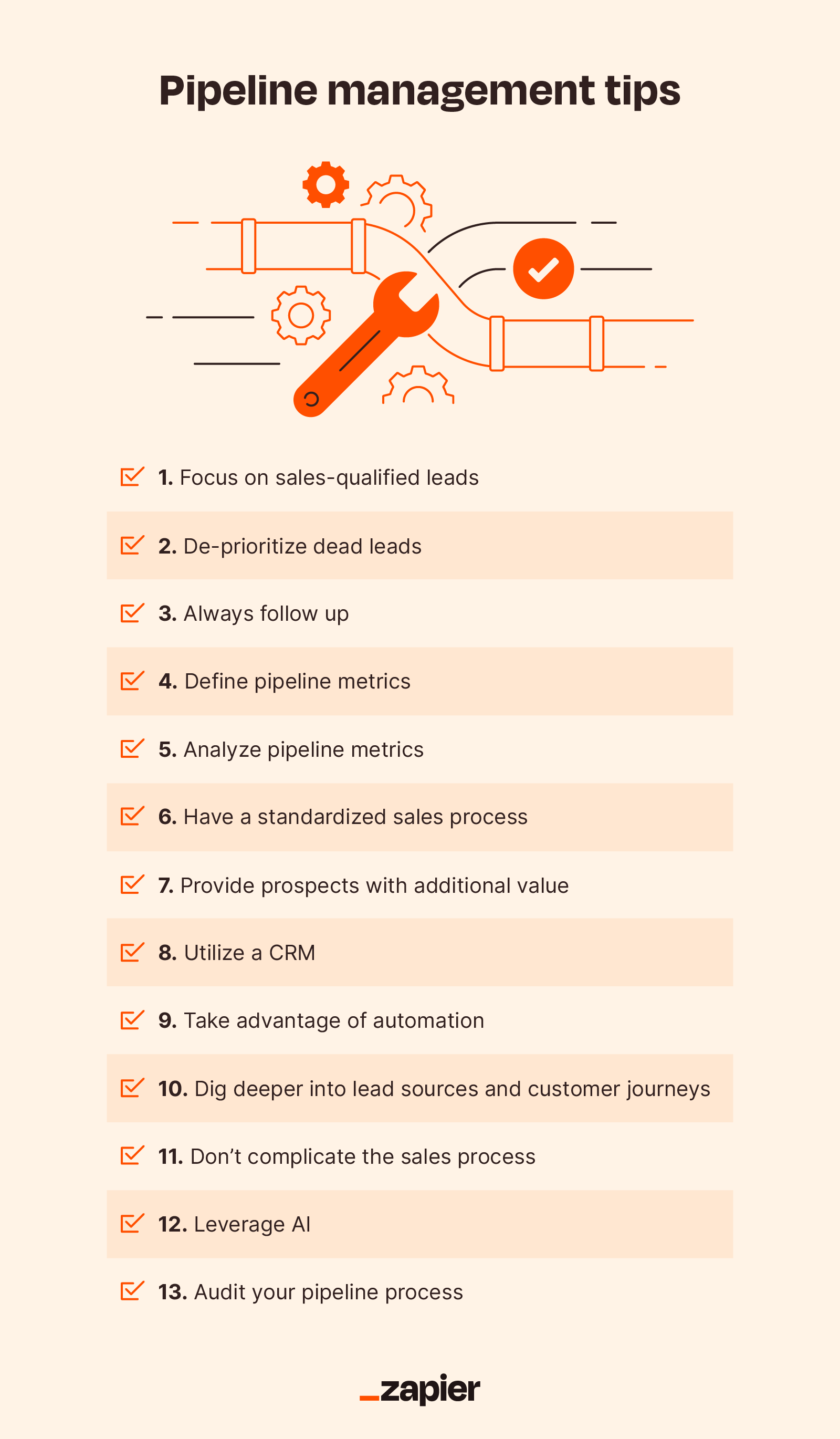
How automation can improve your sales pipeline process
Sales pipeline management really comes down to doing what helps your agents process their tasks efficiently and what keeps leads moving effectively through the sales funnel. And much like the water in your home, it should flow smoothly without your continued attention—but when it blocks up, it needs to be addressed ASAP.
Zapier's no-code automation can help ensure those processes run blockage-free in the background of your business while you and your agents focus on high-level tasks.
Here are more ways to bring automation to your pipelines:
